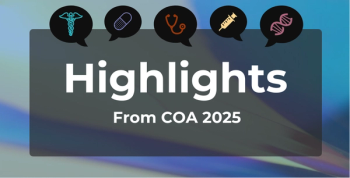
Increasing Access to Antiretroviral Therapies as a Global HIV/AIDS Prevention Strategy
Demonstrating the efficacy of antiretroviral therapies and other treatments in preventing the spread of HIV, Thomas Quinn, MD, showed that there is hope for decreasing HIV transmissions across the world. He cautioned, however, that HIV/AIDS still remains a global pandemic, and more work must be done to accelerate the rate of decrease in HIV infections.
New biomedical strategies for preventing HIV/AIDS were covered in a plenary lecture at the 25th European Academy of Dermatology and Venereology Congress in Vienna, Austria, this Thursday. “The New Threats of HIV & STIs” was presented by Thomas C. Quinn, MD, distinguished investigator and head of the section on international HIV/AIDS research in the Laboratory of Immunoregulation at the National Institute of Allergy and Infectious Diseases, associate director for international research for the Division of Intramural Research at NIAID, professor of medicine and pathology in the Johns Hopkins School of Medicine, and professor of international health, epidemiology, and immunology and molecular microbiology in The Johns Hopkins School of Public Health.
By demonstrating the efficacy of antiretroviral therapies (ARTs) and other treatments in preventing the spread of HIV, Quinn showed that there is hope for decreasing HIV transmissions across the world. He cautioned, however, that HIV/AIDS still remains a global pandemic, and more work must be done to accelerate the rate of decrease in HIV infections.
The current state of HIV/AIDS is startling: 36.7 million people across the world are currently living with HIV. Nonetheless, there have been significant advances in the treatment and prevention of the virus, Quinn explained. Approximately 17 million affected individuals are on life-saving therapy in the form of ARTs, which, as Quinn put it, “have converted this fatal disease to one that can be treated for life.” Moreover, The United States President’s Emergency Plan for Aids Relief (PEPFAR), a global HIV prevention strategy headed by the US, has led to an increase in life expectancies since it began, in 2003.
Despite these improvements, however, HIV/AIDS continues on as a global pandemic. In 2015, 1.1 million people died from AIDS, and there were 2.1 million new HIV infections. “This epidemic has a reached a stable status in many areas of the world … it is not declining as we’d like to see," Quinn said.
To accelerate the rate of decrease in HIV infections across the world, the Joint United Nations Programme on HIV and AIDS (UNAIDS) has set a treatment target known as the 90-90-90 target. It calls for the following baselines by 2020:
- 90% of those infected with HIV should know their HIV status;
- 90% of those diagnosed with HIV should receive sustained ART; and
- 90% of those receiving antiretroviral therapy should have viral suppression.
Quinn explained that ARTs are helping to make this a reality. Several randomized trials have substantiated the effectiveness of ARTs in preventing the spread of HIV through viral suppression. Furthermore, in areas of the world where ARTs are used by over 50% of affected individuals, the treatments have led to a decrease in HIV incidence overall.
“But people must have access to ARTs,” Quinn explained. Unfortunately, access to treatment is often limited in countries that still use extremely low CD4 counts as triggers for treatment, as is the case in Eastern Europe and Central Asia. “So the message to countries and policy makers is to try to get more and more people into treatment, because it will lower the incidence and the spread of HIV infection.”
There are also effective prevention strategies for those individuals who are at risk of HIV infection. Quinn highlighted the efficacy of male circumcision and pre-exposure prophylaxis (PrEP) pills (brand name Truvada) in reducing the risk of infection. He warned, however, that PrEPs do not prevent against STIs, which also increase the risk of HIV infection. Those taking PrEPs are advised to be cautious in their sexual practices.
Quinn was hopeful that the 90-90-90 target could be reached by 2020, but only if ARTs and other treatments are universally accepted and provided.
“Countries have to face strategic choices and take advantage of all these opportunities for treatment and prevention," he said.
Newsletter
Stay ahead of policy, cost, and value—subscribe to AJMC for expert insights at the intersection of clinical care and health economics.








